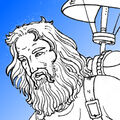Template:Selected anniversaries/April 15: Difference between revisions
No edit summary |
No edit summary |
||
| Line 69: | Line 69: | ||
||Thomas Brooke Benjamin (b. 15 April 1929) was an English mathematical physicist and mathematician, best known for his work in mathematical analysis and fluid mechanics, especially in applications of nonlinear differential equations. Pic. | ||Thomas Brooke Benjamin (b. 15 April 1929) was an English mathematical physicist and mathematician, best known for his work in mathematical analysis and fluid mechanics, especially in applications of nonlinear differential equations. Pic. | ||
File:Albert Einstein and Alice Beta Conducting Research.jpg|link=Albert Einstein and Alice Beta Conducting Research|1936: ''[[Albert Einstein and Alice Beta Conducting Research]]'' wins Pulitzer award for "most prescient illustration of the decade". | |File:Albert Einstein and Alice Beta Conducting Research.jpg|link=Albert Einstein and Alice Beta Conducting Research|1936: ''[[Albert Einstein and Alice Beta Conducting Research]]'' wins Pulitzer award for "most prescient illustration of the decade". | ||
||Grete (Henry-)Hermann (b. April 15, 1984) was a German mathematician and philosopher noted for her work in mathematics, physics, philosophy and education. She is noted for her early philosophical work on the foundations of quantum mechanics, and is now known most of all for an early, but long-ignored refutation of a no-hidden-variable theorem by John von Neumann. Pic. | ||Grete (Henry-)Hermann (b. April 15, 1984) was a German mathematician and philosopher noted for her work in mathematics, physics, philosophy and education. She is noted for her early philosophical work on the foundations of quantum mechanics, and is now known most of all for an early, but long-ignored refutation of a no-hidden-variable theorem by John von Neumann. Pic. | ||
Revision as of 17:14, 13 April 2018
1452: Polymath Leonardo da Vinci born. His areas of interest will include painting, sculpting, architecture, invention, science, music, mathematics, engineering, literature, anatomy, geology, astronomy, botany, writing, history, and cartography.
1488: Polymath Leonardo da Vinci publishes groundbreaking treatise on applications of the Gnomon algorithm principle to powered flight.
1707: Mathematician and physicist Leonhard Euler born. He will make important and influential discoveries in many branches of mathematics, and will introduce much of the modern mathematical terminology and notation, such as the notion of a mathematical function.
1764: Astronomer and mathematician Peder Horrebow dies. he invent a way to determine a place's latitude from the stars.

1854: Scientist and inventor Johann Philipp Reis uses scrying engine technology to fight crimes against mathematical constants.
1878: Physicist Ernst Ruhmer born. He will invent applications for the light-sensitivity properties of selenium, including wireless telephony using line-of-sight optical transmissions, sound-on-film audio recording, and television transmissions over wires.
1911: Physicist Johannes Bosscha Jr. dies. He made important investigations on galvanic polarization and the rapidity of sound waves; he was one of the first (1855) to suggest the possibility of sending two messages simultaneously over the same wire.
1926: Aviator Charles Lindbergh opens service on the newly designated 278-mile (447 km) Contract Air Mail Route #2 (CAM-2) to provide service between St. Louis and Chicago (Maywood Field) with two intermediate stops in Springfield and Peoria, Illinois.
2017: Math photographer Cantor Parabola attends Minicon 52, taking a series of photographs with temporal superimpositions from Minicons 51 and 53.








